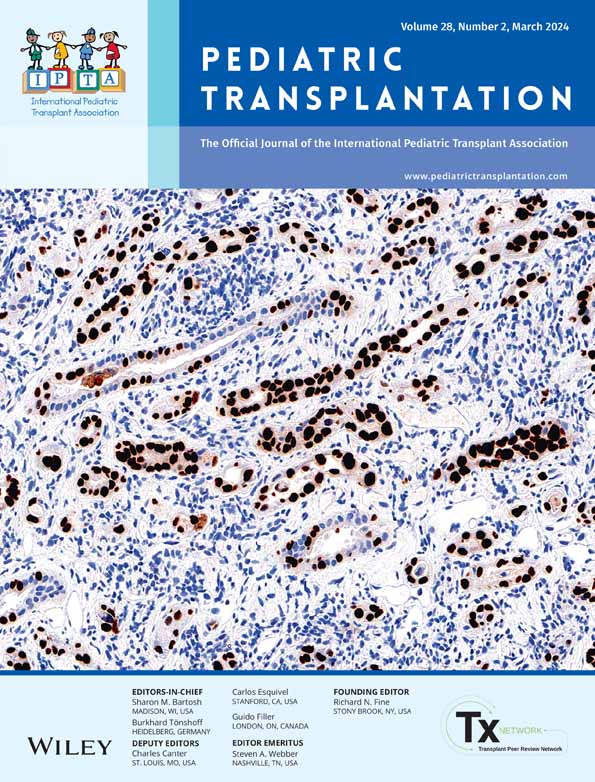Pulmonary vein stenosis in heart transplant patients
Abstract
Background
Pulmonary vein stenosis (PVS) is a rare pediatric condition associated with significant mortality and morbidity. PVS in patients following heart transplant (HT) has not yet been described.
Methods
Patients who had clinically significant PVS following a heart transplant during the time period of April 1, 2013 to April 30, 2023, at Seattle Children's Hospital were identified. Clinically significant PVS was defined as an atretic vein or a vein with a gradient of ≥4 mmHg across at least one vein by echocardiogram or during cardiac catheterization. Patients who had a diagnosis of PVS prior to their transplant were excluded. A total of six patients were identified. We collected clinical data on these patients from their pre-transplant course to their most recent status.
Results
The median age at HT was 7.5 months (range 2–13 months). The median time from HT to diagnosis of PVS was 3.5 months (range 0.3–13 months). At the last follow-up, the patients had had two to five pulmonary vein interventions, and there were no mortalities. The donor-to-recipient weight and total cardiac volume (TCV) ratios were less than 2.0 in five of six of the patients.
Conclusions
PVS is a rare complication that is associated with patients who undergo HT during infancy. PVS develops soon after HT and screening should occur accordingly. Interestingly, high donor-to-recipient weight and TCV ratios are not necessarily associated with the development of PVS. Further work will need to be performed in order to determine the significance of PVS in post-HT patients.
CONFLICT OF INTEREST STATEMENT
All authors have no disclosures.
Open Research
DATA AVAILABILITY STATEMENT
The data that support the findings of this study are available on request from the corresponding author. The data are not publicly available due to privacy or ethical restrictions.




